In order to collect my late husband’s American pension from those long ago days when he had taught English at Washington U, where his very novel interpretation of Romeo and Juliet had (among other things) shocked the older members of the faculty, and he had failed to get tenure, I had to get a document notarised on American soil.
And so it was that I was back in New York, staying with my son and his family: my English son having done as his stepfather had done, but in reverse. For him, New York is now Home as London had been for R, and he knew just where to go to get the document notarised: a kiosk, a few streets away, where it was done within minutes and cost something like five dollars.
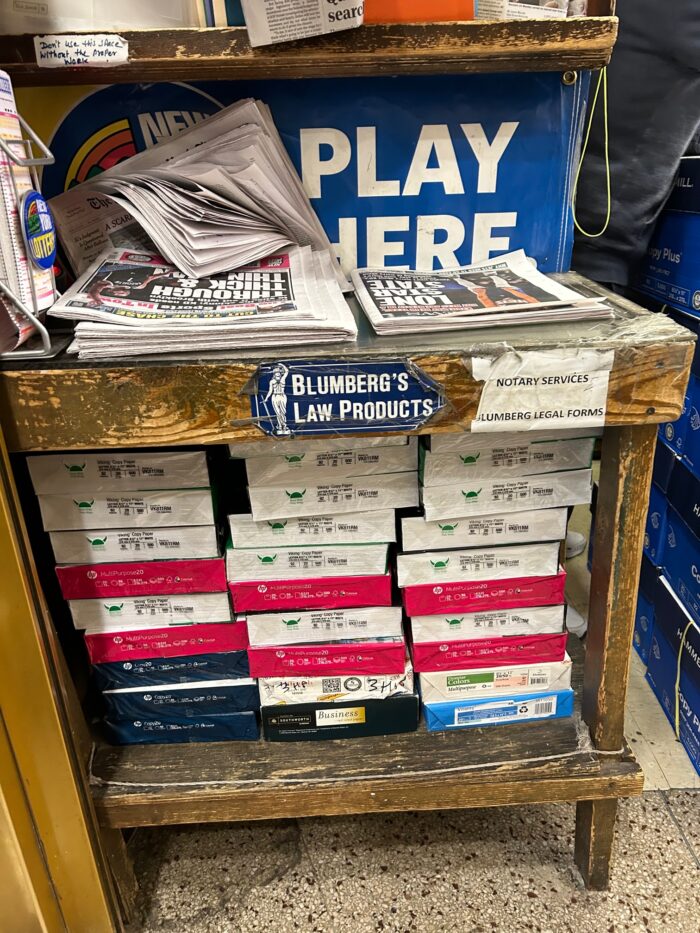
Not long before, in London, where lawyers have a stranglehold on this simple procedure, notarising does not come cheap. I had paid £400 for the same thing*.
There is a lot to learn from this wonderfully brash and friendly upstart of a nation which, when it wants to, can copy us to a T. I hadn’t on previous visits been in Gramercy Square which is as lovely, leafy and tranquil as any in Canonbury.
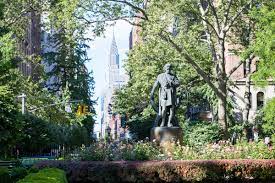
All the more surprising then to find Union Square – New York as we know it from the movies – such a short distance away. More surprising still the sight of a giant rat looming over the parked cars on the far side of the square.
I did not know then, as I was to learn from the man who had erected it, that these inflatable rats are seen quite often in this country – not crippled by good taste and ancient by-laws – and that they denote something rotten in the building they are parked outside.
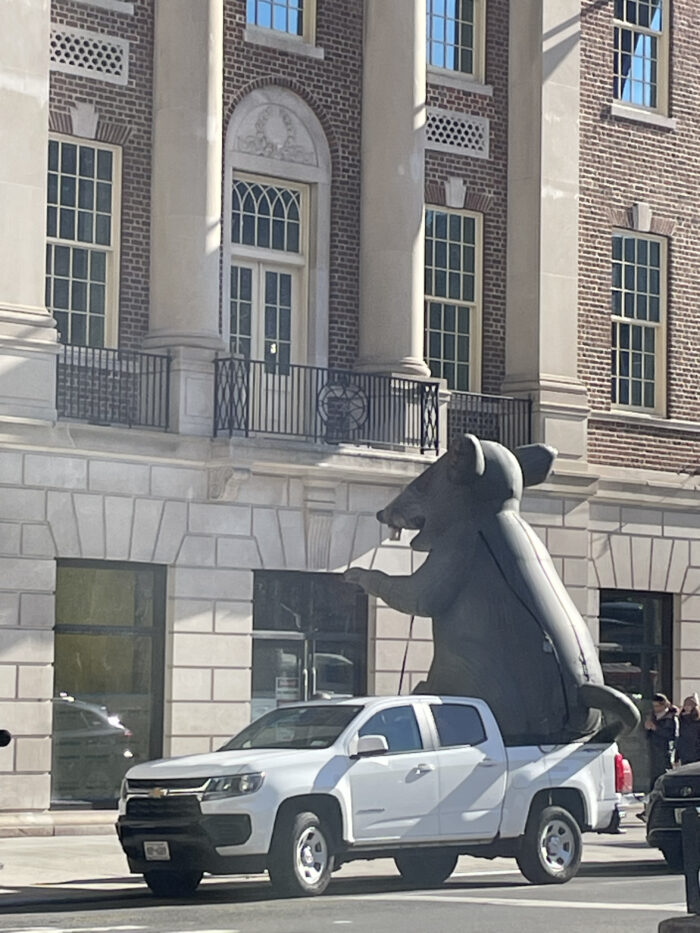
Our informant, who turned out to be a member of the Union of Carpenters, told us the owners of this building were engaged in negotiations which would deprive him and his fellow members of badly needed jobs.
How long, I wondered, would my two ex-employers have been able to put up with such public shaming? The first had threatened to close the firm down when we tried to join a union, but was not as absurdly pompous and concerned about self-image as his successor who had, as it were, sold the family silver, and then departed.
What I can be sure of is that neither of them, on their frequent trips to New York, would have taken the commuter ferry from which, on a glorious spring-like February day, we wove backwards and forwards across one stretch of water after another, dazzled by the strange beauty of this city which reaches for the sky, one building after another, in its contortions defying the rules of gravity.
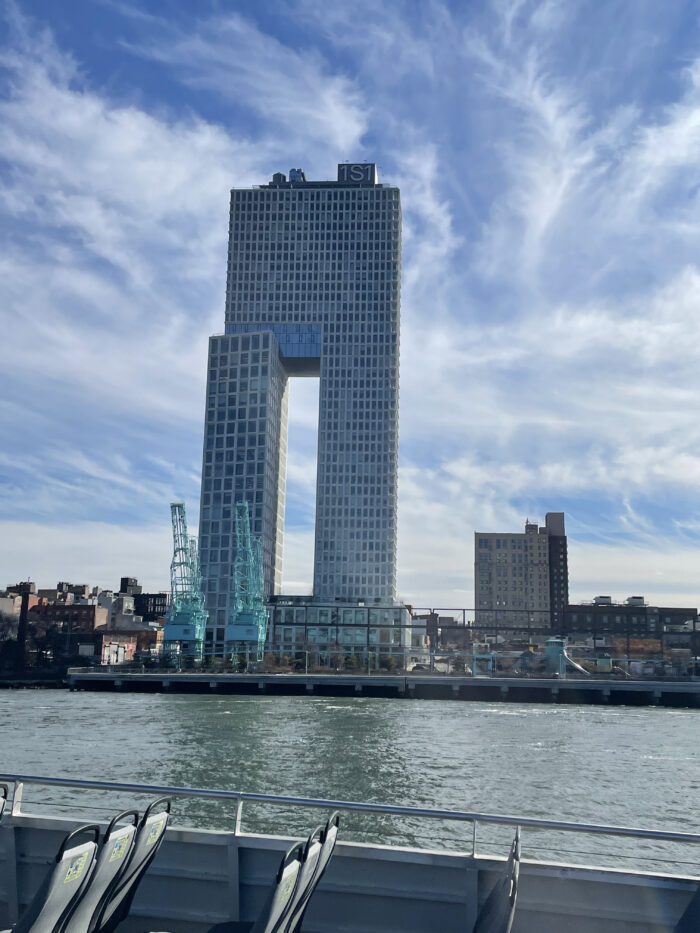
It was not till looking for photographs of British cathedrals to send to my grandson, that I was reminded that building high long pre-dates those computer-generated structures.
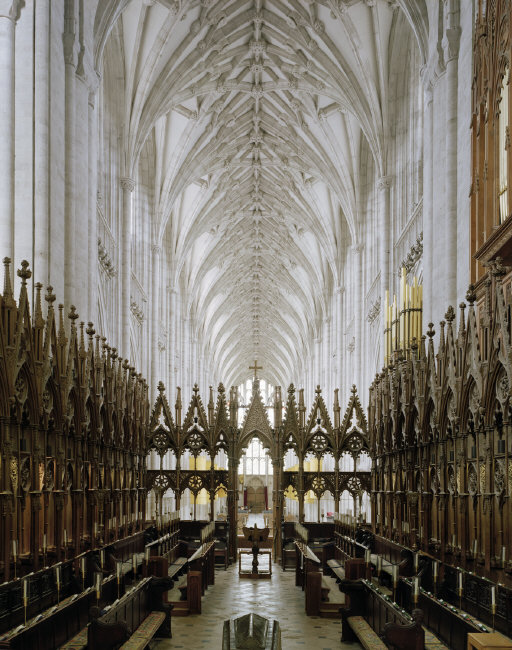
As for the faith which inspired the creation of those cathedrals, it now hangs by a thread over here and Mammon – the god of skyscrapers and Canary Wharf – will soon be all we are left with. Not so over there, where the god of material wealth is in deadly harness with a warped form of the old Christian faith, and you can see exhortations like this on any street corner outside the soaring banking sector, without needing to travel to the Bible Belt.
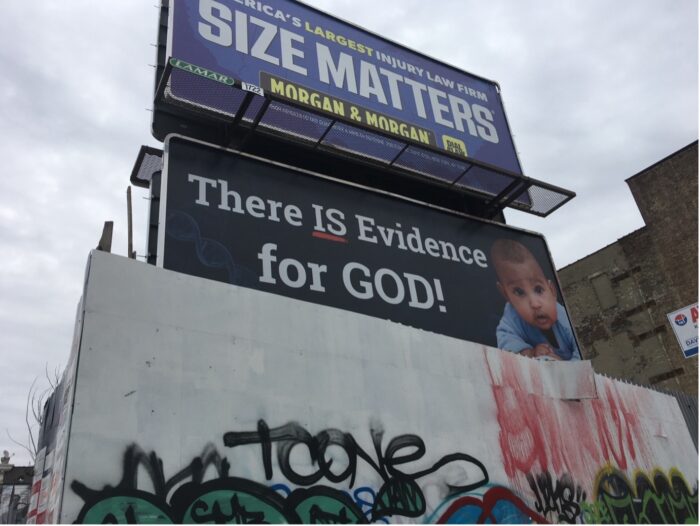
*The U.S. Embassy had withdrawn its notarising service, perhaps because of Covid, and with no information as to when it would resume.